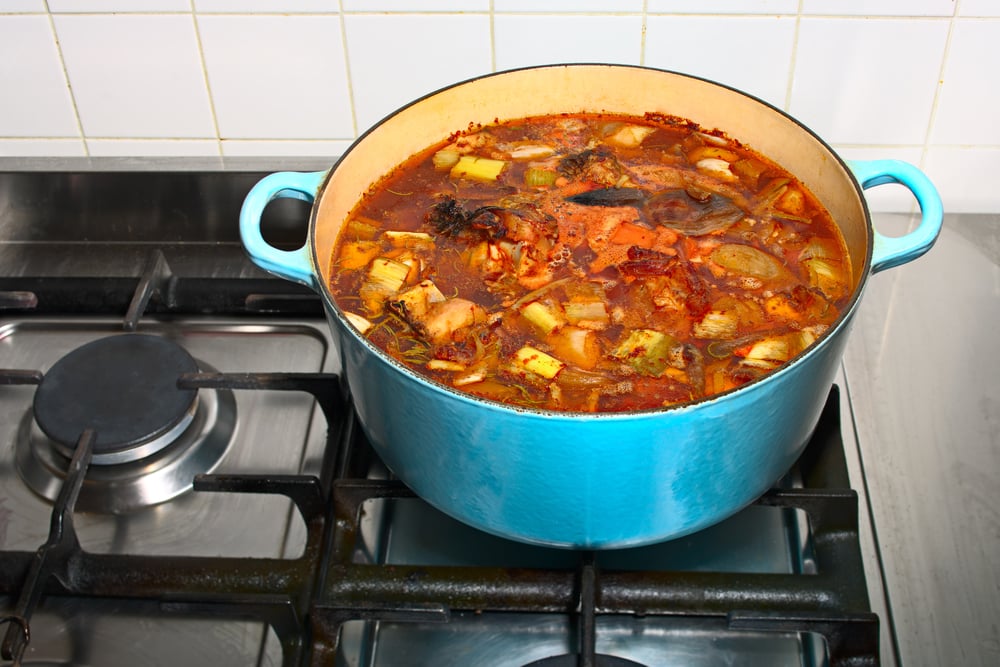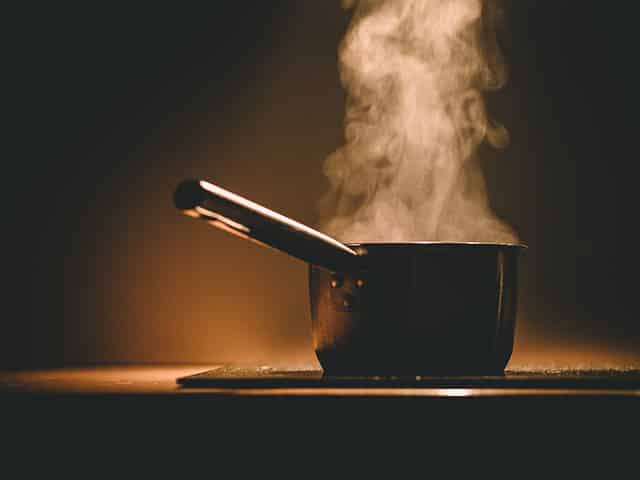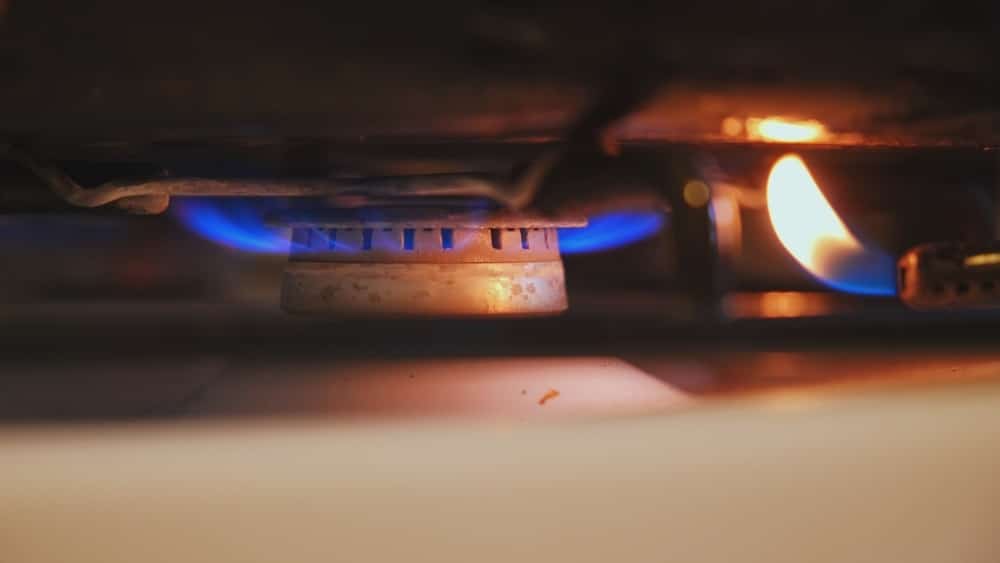
Simmering is a cooking method that brings the liquid of a dish to just below the boiling point over moderate to low heat.
This method uses gentle cooking to soften foods slowly over time, before gradually adding seasonings and other ingredients to the dish. Simmering allows food to maintain its structure and deepens flavors, delivering a more tender final dish.
This method of cooking has typically been used for soups, stews, cooking grains like rice or barley, and for slow-cooking cheap cuts of meat.
Tough cuts cook slowly, maintaining their moisture and becoming meltingly tender. Stocks and sauces reduce to a rich concentrate of flavorful deliciousness.
Simmering is a useful moist-heat (as opposed to dry heat) cooking method for one-dish meals and dishes that need to be cooked long and slow.
What immediately comes to mind are soups and stews, but it is also wonderful for developing flavors in things like bolognese sauce. Simmering allows liquid to slowly evaporate and flavors to soften and mellow.
It also causes tough meat sinews to dissolve into the cooking liquid, enriching the liquid while at the same time tenderizing the meat and allowing it to fall off the bones.
On the temperature scale, simmering comes somewhere in between boiling and poaching. To do it, the food must contain liquid or be a liquid. Anything from stock, broth, fruit juice, water, or milk can be used to simmer foods in.
Can I simmer food on my gas stove?
You certainly can simmer food on a gas stove. Most modern gas hobs have a designated “simmer burner” which is smaller and gentler than the larger burners.
They create a small, gentle flame that is perfect for simmering. Keep reading because we are going to tell you all about how to simmer on a gas stove.
How To Simmer On A Gas Stove?
While boiling food is done at temperatures of 100 degrees Celcius, simmering occurs below that between 85 and 95 degrees Celsius. You don’t need to get the thermometer out to check though as you can tell simply by looking.
- If your recipe tells you to “simmer slowly,” you want the burner on a low flame and only a small amount of activity on the saucepan. There should be a few whisps of steam and the odd bubble. We use this slow simmer for making stock.
- The recipe may tell you to simply “simmer” the food for a certain period. For this, turn the burner up slightly to a medium-low flame (a little higher than the lowest flame). You should see gentle, constant bubbling.
- The last type of simmering is a “rapid simmer.” This is not quite boiling because the bubbles must be quite small. You will need to turn the flame on your smallest burner to medium height. This simmer is used for things like sauce reduction.
How to simmer on a gas stove – more tips
- Should I use the lid or not? It depends on the recipe but if the lid is used, it is normally tilted at an angle. This is done to allow some steam to escape, prevent boiling over, and prevent increasing the heat too much back to boiling point. Dishes requiring long, slow cooking such as soups and stews are often simmered with the lid on. Those needing to be reduced such as sauces are simmered with the lid off.
- Begin by turning your gas burner to high in order to get the food to boiling point. Once it is boiling, turn the flame lower. You may prefer to bring the pot to a boil on one of the larger burners to save time, then transfer it to the small, simmer burner once it is bubbling.
- If your gas stove doesn’t have a small simmer burner, invest in a flame tamer ring, otherwise known as a simmer ring or heat diffuser. They are usually made of metal like aluminum in the shape of a plate with holes in them. This is placed over the burner and ensures low, gentle heat for simmering.
- Keep in mind that gas stoves tend to burn hotter than electric stoves because the heat is coming directly from the flame itself. Therefore, if the recipe tells you to simmer the dish over a medium heat, you may need to turn the flame to a low heat. If it calls for a low heat, you may need to turn the flame very low. Keep practicing and you will soon get the hang of it!
To conclude
Simmering on a gas stove is fairly straightforward as long as you keep our tips in mind. Investing in a heat diffuser makes a big difference and we highly recommend it. Happy cooking!

